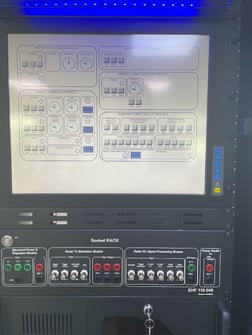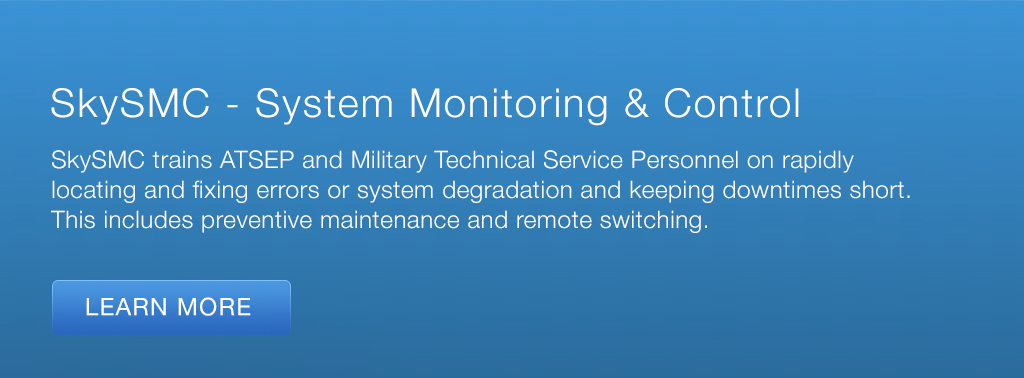ATC ensures safe aircraft movement using technologies like radars and communication systems. Errors, like azimuth reset pulse, can disrupt transmission, impacting aviation safety. This article examines these errors and prevention/rectification steps
Air Traffic Control (ATC) is a critical component of the aviation industry, ensuring the safe and efficient movement of aircraft. The equipment used in ATC services includes various technologies such as radars, communication systems, and navigation aids, among others. These systems rely on accurate transmission of data and signals, and any errors in transmission can have severe impacts on aviation safety. One such error is related to the azimuth reset pulse, which can cause disruptions in ATC services. In this article, we will explore the impact of transmission media errors due to azimuth reset pulse on ATC and the steps that can be taken to prevent and rectify such errors.
Definition of Transmission Media Error due to Azimuth Reset Pulse
Transmission media errors due to azimuth reset pulse refer to errors that occur in the transmission of signals between the radar system and the controller's display unit. The azimuth reset pulse is a signal that is generated by the radar system when the antenna changes direction. This signal is used by the controller's display unit to reset the position of the target on the display screen. Any error in the transmission of this signal can result in inaccurate target position and loss of situational awareness, which can lead to potential aviation incidents.
What is Azimuth Reset Pulse?
Azimuth reset pulse is a signal generated by the radar system when the antenna changes direction. This signal is used by the controller's display unit to reset the position of the target on the display screen. The azimuth reset pulse is crucial in maintaining accurate target position and situational awareness for the controller. Any error in the transmission of this signal can lead to incorrect target position on the display screen and potential aviation incidents.
Understanding impact of the impact of Azimuth Reset Pulse related transmission errors on Air Traffic Control Services
Let us study the impact of Azimuth Reset Pulse related transmission errors on Air Traffic Control (ATC) services comprehensively examined from two scenarios that highlight the consequences of such errors on ATC services
Scenario 1 “Tracking Inaccuracy and Increased Workload”
In this scenario, an Azimuth Reset Pulse related transmission error occurs, leading to inaccuracies in the tracking of aircraft positions. As a result, air traffic controllers are presented with inconsistent or unreliable information about the location and movement of aircraft under their jurisdiction. This situation significantly increases their workload as they must manually cross-check and validate the data from multiple sources to ensure accurate aircraft tracking. The risk of potential conflicts and loss of situational awareness rises, demanding heightened vigilance and cognitive load from the air traffic controllers. The impact of such errors can strain the efficiency and effectiveness of ATC services, potentially leading to delays, increased separation requirements, and compromised safety.
Scenario 2 “Communication Disruption and Impaired Coordination”
In this scenario, Azimuth Reset Pulse related transmission errors disrupt the communication systems used for seamless coordination between air traffic controllers and pilots. The errors may cause signal degradation, intermittent connectivity, or complete communication loss. As a result, crucial instructions, clearances, and updates cannot be efficiently relayed between ATC and pilots, leading to miscommunications and misunderstandings. This breakdown in communication hampers the overall efficiency and safety of ATC services. The potential consequences include delayed departures and arrivals, compromised adherence to flight procedures, and increased workload for air traffic controllers as they strive to restore communication channels or resort to alternative means of communication.
In both scenarios it becomes evident that Azimuth Reset Pulse related transmission errors can have detrimental effects on ATC services. These errors introduce uncertainties, increase the workload of air traffic controllers, and hinder effective coordination. Proper training, robust system maintenance, and timely intervention by ATC professionals, including ATSEP (Air Traffic Safety Electronics Personnel), are essential to mitigate the impact of such errors. Their expertise in troubleshooting, system diagnosis, and rectification plays a critical role in ensuring the accuracy, reliability, and safety of air traffic control services.
Factors Responsible for Azimuth Reset Pulse related Transmission Media Errors
Several factors can contribute to azimuth reset pulse related transmission media errors. These factors include
Equipment Malfunction
Equipment malfunction can lead to errors in the transmission of signals between the radar system and the controller's display unit. This can occur due to faulty components, outdated software, or inadequate maintenance.
Interference
Interference from other sources such as radio signals, electromagnetic waves, or weather conditions can cause errors in the transmission of signals.
Incompatibility
Incompatibility between the radar system and the controller's display unit can cause errors in the transmission of signals. This can occur when the equipment is not designed to work together, or when there are differences in the hardware or software components.
Human Error
Human error can also contribute to azimuth reset pulse related transmission media errors. This can occur due to improper handling of equipment, inadequate training, or lack of attention to detail.
Common types of Transmission Media Errors caused by Azimuth Reset Pulse
Some common types of transmission media errors caused by azimuth reset pulse include:
Target Jitter
Target jitter refers to the oscillation of the target on the display screen, which can occur due to errors in the transmission of the azimuth reset pulse. This can result in inaccurate target position and loss of situational awareness.
Target Disappearance
Target disappearance refers to the loss of target on the display screen, which can occur due to errors in the transmission of the azimuth reset pulse. This can result in loss of situational awareness and potential aviation incidents.
Target Ghosting
Target ghosting refers to the appearance of false targets on the display screen, which can occur due to errors in the transmission of the azimuth reset pulse. This can result in confusion and loss of situational awareness.
Rectification steps to be followed by Air Traffic Safety Electronics Personnel (ATSEP) in addressing transmission media errors resulting from the azimuth reset pulse.
When transmission media errors related to the azimuth reset pulse occur ATSEPs (Air Traffic Safety Electronics Personnel) should follow these steps for rectification
Identify the Error
Thoroughly investigate and identify the specific transmission media error related to the azimuth reset pulse. Analyze the symptoms, error patterns, and affected systems to pinpoint the root cause.
Isolate the Issue
Determine if the transmission media error is specific to a particular component, system, or subsystem. Isolating the issue helps focus troubleshooting efforts and minimizes disruption to other operational systems.
Coordinate with Maintenance Team
Collaborate with the maintenance team responsible for the affected systems or components. Provide them with detailed information regarding the transmission media error and work together to rectify the issue.
Perform System Checks
Conduct comprehensive checks of the affected systems, including the radar system, communication equipment, antennas, and associated components. Verify their alignment, functionality, and integrity to ensure they meet the required specifications.
Calibrate and Adjust
If necessary, calibrate the azimuth reset pulse parameters to ensure accurate alignment with the antenna rotation. Adjust any settings, configurations, or thresholds to eliminate transmission errors caused by misalignment or mismatch.
Test and Validate
Perform thorough testing to validate the rectification measures. Verify the accuracy and reliability of the transmission media by monitoring and analyzing the signals, data, and communication performance.
Document and Report
Document the entire rectification process, including the steps taken, findings, adjustments made, and test results. Report the incident, actions taken, and any recommendations for preventive measures to ensure proper documentation and knowledge sharing.
Steps to be Followed by ATSEP for Preventing Azimuth Reset Pulse related Transmission Media Errors
ATSEP can take several steps to prevent azimuth reset pulse related transmission media errors including
- Regular maintenance and inspection of the radar system and antenna to ensure that they are in good working condition.
- Ensuring that the radar system and antenna are compatible and properly configured.
- Conducting periodic testing of the azimuth reset pulse signal to ensure that it is consistent and synchronized with the antenna rotation.
- Ensuring that the azimuth reset pulse signal is within the required tolerances to prevent any errors.
Research Highlights
- Several studies have been conducted on the impact of transmission media errors related to azimuth reset pulse on ATC services. One study found that these errors can lead to loss of situational awareness and potentially catastrophic aviation incidents. The study also recommended regular maintenance, testing, and equipment compatibility to prevent such errors.
- Another study examined the impact of azimuth errors on the accuracy of secondary surveillance radar. The study found that azimuth errors can lead to inaccurate target position and altitude readings, potentially compromising the safety of air traffic. Furthermore, it is important for ATSEP to stay updated with the latest technologies and techniques for preventing and rectifying azimuth reset pulse related transmission media errors.
- Regular training and education can ensure that ATSEP are aware of potential errors and are equipped to handle them effectively. By staying vigilant and taking proactive measures, ATSEP can help ensure the safety and efficiency of air traffic control services.
- Transmission media errors related to azimuth reset pulse can have significant impacts on air traffic control services, potentially leading to accidents and incidents. These errors can be caused by a variety of factors, including equipment malfunction, maintenance issues, and compatibility problems. It is critical for ATSEP to take necessary measures to prevent and rectify such errors, including regular maintenance, testing, and training. By doing so, ATSEP can help ensure the safety and efficiency of air traffic control services, ultimately promoting the safety of the flying public.
- Researchers have developed new technologies and techniques for preventing and rectifying azimuth reset pulse related transmission media errors, including the use of digital signal processing and improved equipment design.
- The International Civil Aviation Organization (ICAO) has developed guidelines and standards for the prevention and rectification of transmission media errors related to azimuth reset pulse, emphasizing the importance of regular maintenance, testing, and training.
SkyRadar's System Monitoring & Control Solution
SkySMC - SkyRadar’s System Monitoring and Control Suite is a pedagogically enhanced, fully operational monitoring & control tool. It has been designed to practice these use cases. We have optimized it to host ATSEP training in SUR, NAV, COM, DPR and SMC compliant to EASA's Easy Access Rules for ATM-ANS (Regulation (EU) 2017/373) and ICAO Doc 10057.
SkyRadar provides SkySMC as a complete laboratory in a turn-key approach, or as a virtual infrastructure (for purchase or as a service).
SkySMC is not a simulator, but a fully operational open monitoring system. It comes by default with a server including various virtualized applications and virtualized servers, but also connects to simulated systems. In addition, there are various hardware extensions available including training infrastructures, monitorable training radars, or even complete ATM systems, all connected to the System Monitoring & Control solution. Most components such as the radars, it IT infrastructure or networks exist in hardware and software (virtualized or simulated).
The two photos above show the same trouble-shooting panel and socket rack in real hardware and in the simulator (fully functioning).
SkyRadar's System Monitoring & Control training system can be easily blended into distance learning solutions and existing learning management systems.
Let's talk
Stay tuned to be always the first to learn about new use cases and training solutions in ATSEP qualification (real radars or simulators).
Or simply talk to us to discuss your training solution.
References
Garg, S., & Murthy, T. K. S. (2018). A study on transmission media errors in air traffic control. International Journal of Engineering & Technology, 7(4.7), 161-164.
International Civil Aviation Organization. (2019). Global Air Navigation Plan for CNS/ATM Systems. Retrieved from https://www.icao.int/Meetings/anconf12/Documents/WP/wp150_en.pdf
Zhang, L., & Lu, G. (2016). Research on Azimuth Reset Pulse Processing of ATCRBS. International Journal of Computer, Electrical, Automation, Control and Information Engineering, 10(3), 469-472.
Federal Aviation Administration. (2017). Transmission Error Report: FY 2016.






